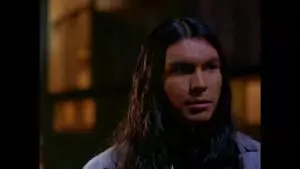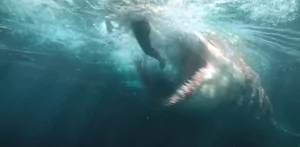By Dan Schneider

✅ AI Essay Writer ✅ AI Detector ✅ Plagchecker ✅ Paraphraser
✅ Summarizer ✅ Citation Generator
Sometimes the extra features on a DVD oddly turn out to surpass the featured film itself. Such is the case with the Criterion Collection’s DVD of Japanese filmmaker Hiroshi Teshigahara’s 1984 documentary on the buildings of Catalan architect Antoni Gaudi (1852-1926)—the film’s title is a spelling error. The film runs a mere 72 minutes, yet it seems much longer, and this is because, despite the film’s title, there is surprisingly little focus on the actual works of the architect. Much of the film skirts over things related to the buildings, and adds in odd musical accompaniment, by Toru Takemitsu, Kurodo Mori, and Shinji Hori.
Aside from a few spoken words, caught seemingly on the fly, there is no narration in this ‘documentary,’ which may make it superficially seem to be even more documentary than most documentaries. Yet, it lacks the power of similar films made by Werner Herzog, or the Quatsi films of Godfrey Reggio because the images and the music rarely cohere. And, even when the film is showing a Gaudi work, it never lingers on it in full for long, as the cinematography, by Junichi Segawa, Yoshikazu Yanagida, and Ryu Segawa merely skims, and often shows people in the buildings, or around then, thus detracting from the ‘purity’ of the work.
There’s little doubt that Gaudi was an excellent practitioner of his craft, which often seems to prefigure the drawings of HR Giger in their sensual animalism. They also recall the sets used in the original 1968 The Planet of the Apes. But one will not be able to delve into the extent of that talent via this main film, for there is no absorption into the imagery of the art. And this is quite surprising, since Teshigahara’s earlier films, like Pitfall, Woman in the Dunes, and The Face of Another, were so in synch with their subject matter. One can only guess that the gap between drama and documentary filmmaking is a divide the man, for whatever reasons, simply could not bridge. For some, the film may be a great experience, but it is not great art.
The DVD package comes with two disks, and the film alone (all of its mere 72 minutes) is on Disk One, shown in a 1.33:1 aspect ratio, meaning that Disk Two has the extras. But since there’s not much of them, this is a clear case of Criterion adding an extra disk just so it can jack up the price for the set as a Double Disk version. This documentary was simply screaming out for a learned commentary by a film historian and/or architect, but, as with an alarmingly high percentage of the DVDs released since going to their semi-circle logo, Criterion skimps in the wrong place. Disk Two has a thirteen-minute long video interview architect Arata Isozaki, a friend of Teshigahara, as well as the production designer on The Face Of Another, and he details the interest in Gaudi, and those aspects that tie into Japanese design and aesthetics. Too bad this could not have been shown in the actual film. Gaudi, Catalunya, 1959 is a home movie from Teshigahara’s first trip to Spain. Sculptures By Sofu-Vita is a 17-minute long film made by Teshigahara in 1963, about the Gaudi influenced sculptures of his father, Sofu Teshigahara, the famed ikebana artist.
The best part of the package, though, is Visions Of Space: God’s Architect, an hour-long BBC documentary on Gaudi, hosted by art critic Robert Hughes. As with many of the writings and documentaries of his, Hughes adds little to our knowledge of Gaudi, but this film does a great deal more of explaining and showing Gaudi’s work to its best advantage. Hughes shows his lack of bona fides as an art critic in a scene where he criticises Gaudi’s ornamental sculptures on a famed church he built as banal. And while true, if taken on their own, the fact is that the traditional blandness of the sculptures actually work against the over-the-top innovative forms the rest of the building highlights.
There is also a 15-minute long documentary on the architect by famed English film director Ken Russell, from a 15-minute BBC episode of the news magazine Monitor. To round things out, there is a 36-page insert booklet which features an article on Teshigahara by art historian Dore Ashton, author of The Delicate Thread: Teshigahara’s Life and Art, a translation of Teshigahara’s thoughts on visiting Spain in 1959, and a roundtable discussion between the Teshigaharas and other Japanese artists. Despite the lack of an illuminating audio commentary track, the extras do help me be able to slightly recommend the DVD package, if not the film, itself. Antonio Gaudi is certainly not a good reflection on Antoni Gaudi, but the DVD’s extras do give a well-rounded entrée into an appreciation for a superior practitioner of his craft. And that’s worth a looksy.
———–
Written under a Creative Commons License, with edits: https://creativecommons.org/licenses/by/1.0/
Follow us on Reddit for more insights and updates.




Comments (0)
Welcome to A*Help comments!
We’re all about debate and discussion at A*Help.
We value the diverse opinions of users, so you may find points of view that you don’t agree with. And that’s cool. However, there are certain things we’re not OK with: attempts to manipulate our data in any way, for example, or the posting of discriminative, offensive, hateful, or disparaging material.